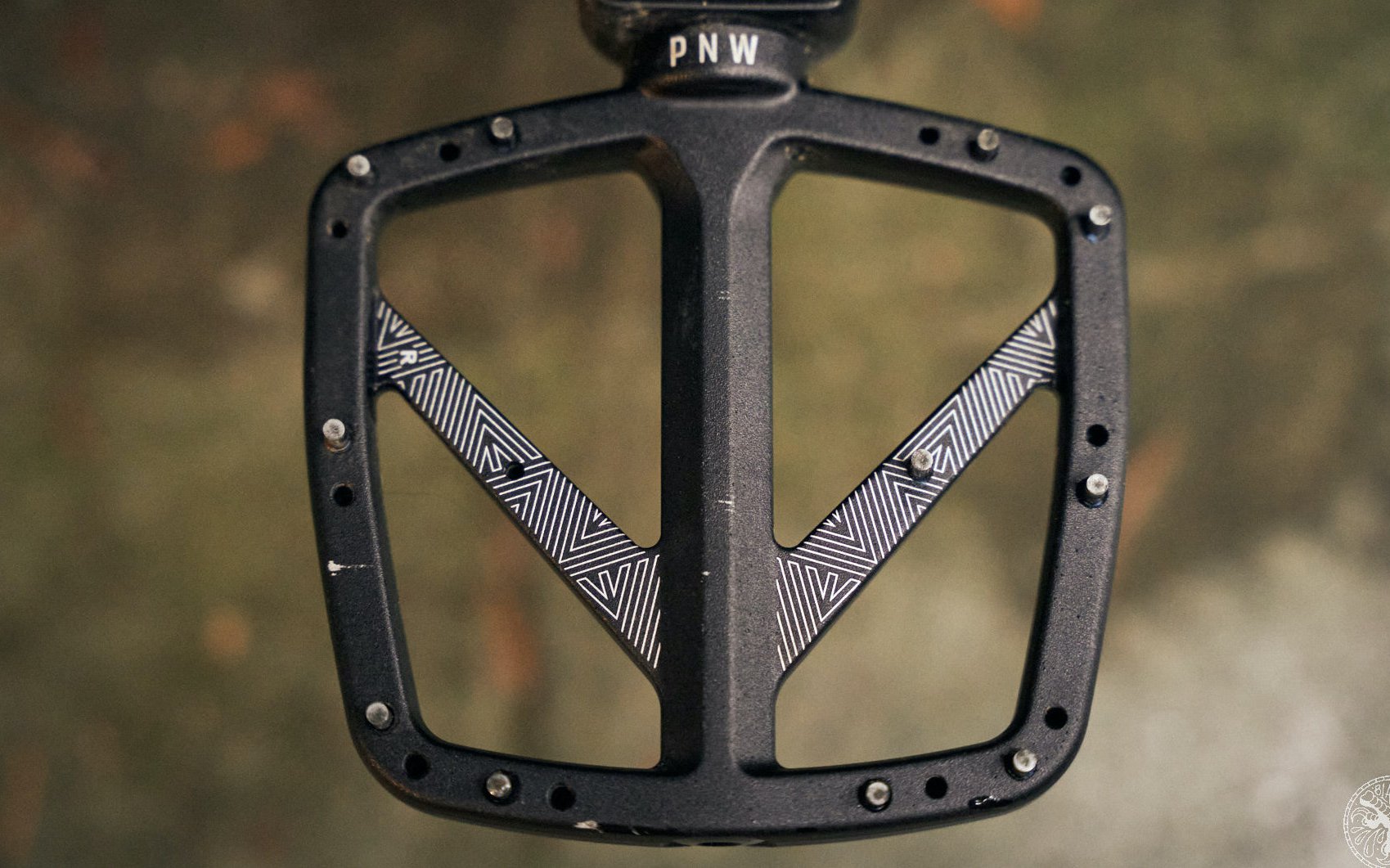
FIRST IMPRESSIONS
Introducing PNW Loam Pedals
There was a time, not that long ago, when I hated most pedals. They were too thick, didn't have enough grip, the pins clearly wouldn't last a week, and the bearings/bushings were crap. They were often heavy as well. I would see an image of a new pedal and be able to write it off in about five seconds. Lately however, most of the pedal designs I see and try are actually really good. They are often nice and thin, have easily replaceable pins with protected threads, good bearings, and a shape designed for good grip and minimal impacts when mounted to our longer lower and slacker machines.
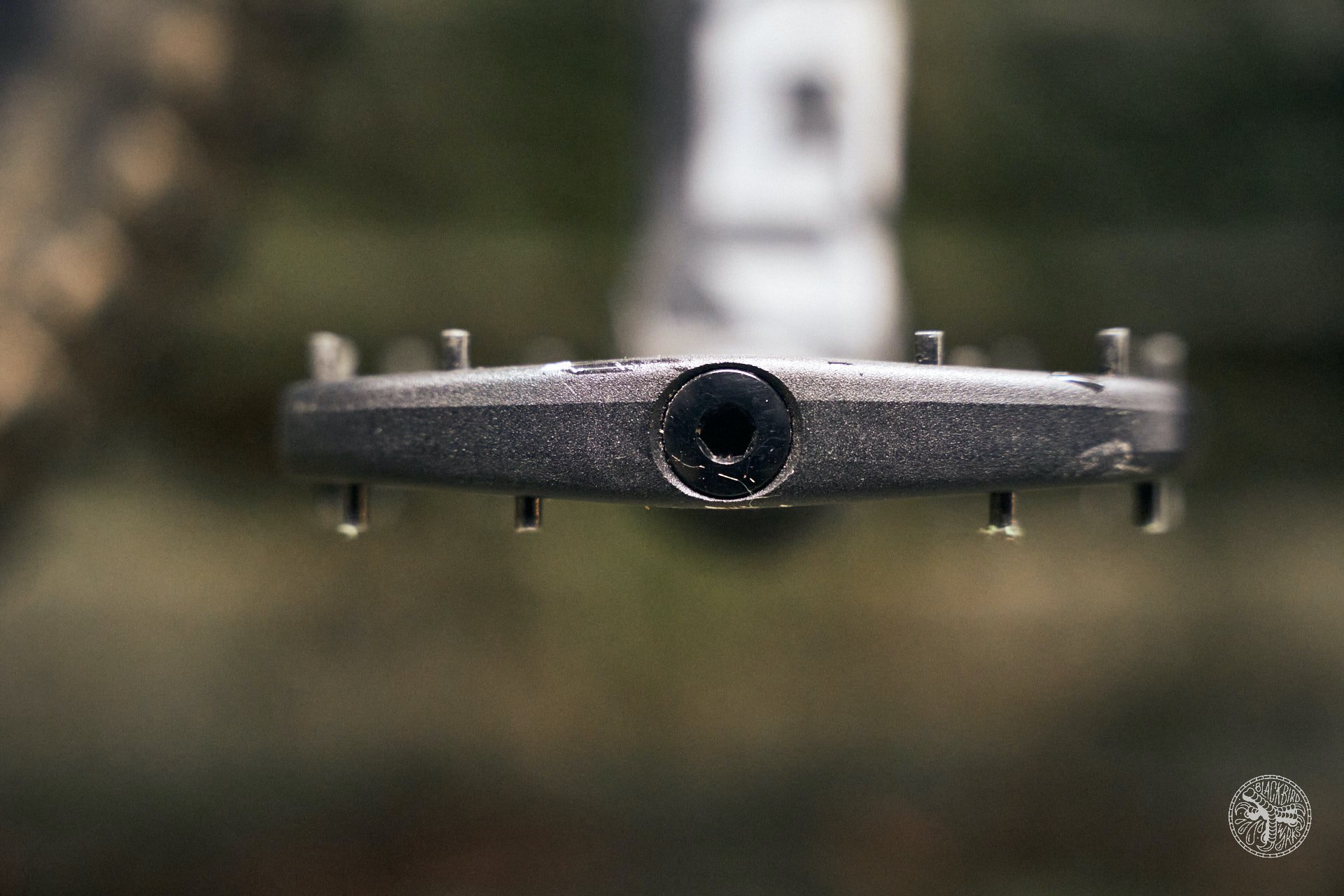
This isn't the thinnest pedal I've used, but it's certainly in the right ballpark. The leading and trail edges measure 14mm, including pins.
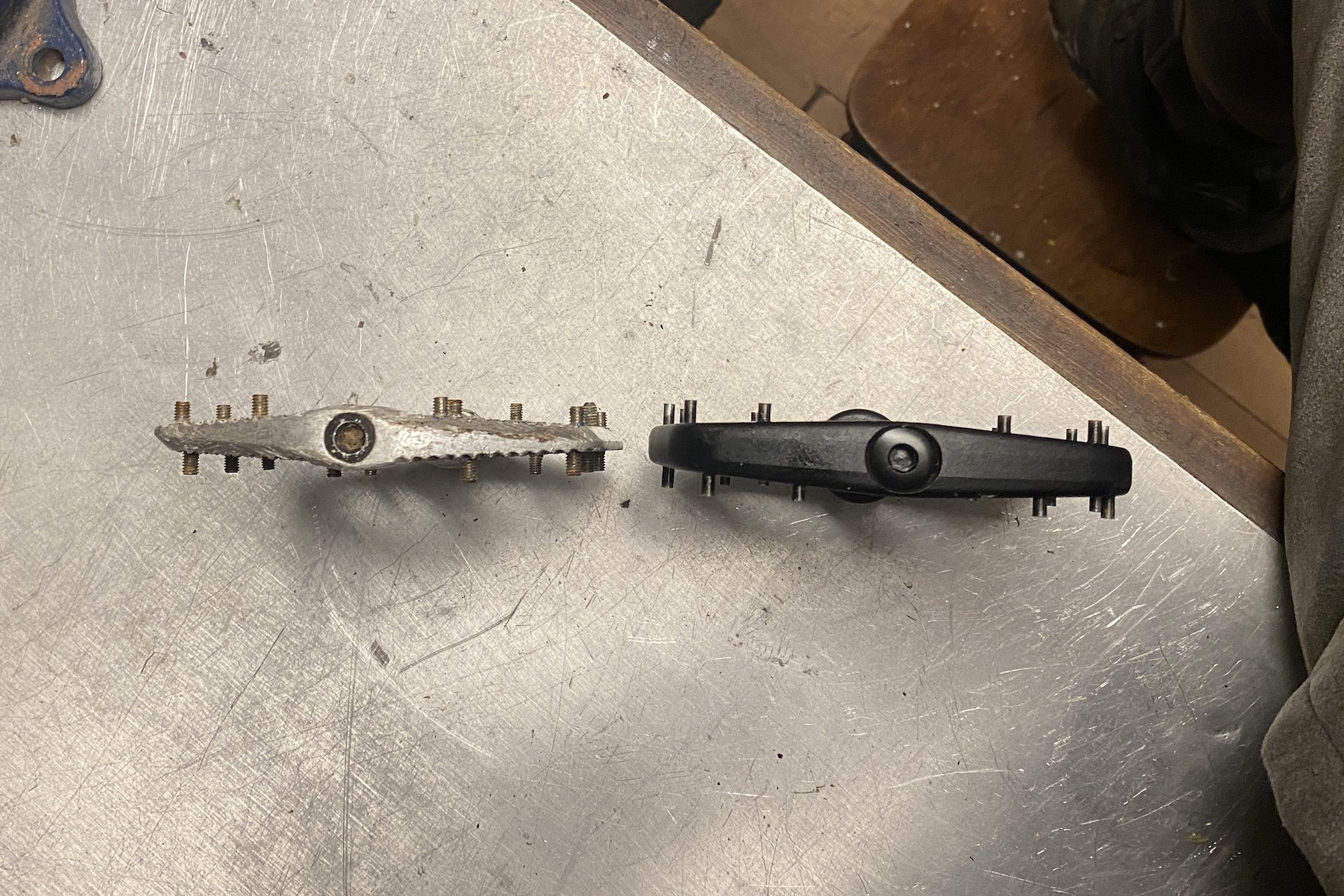
Side by side, Canfield Mountain and PNW Loam pedals. The Canfields measure 11mm at the leading edges while the PNW are about 14 with similar pin length. The Canfields are about 50g lighter per pair, but they cost 60 USD more than PNW's Loamers. Photo - Cam McRae
A relatively new phenomenon is pedals with a convex platform. Canfield does this, and they might have been the first, as well as OneUp, and PNW has followed this welcome trend. The idea that your foot can actually be cradled in an area 100 or so millimetres long started to feel far-fetched to me some time ago. Considering our shoes drape over the pedal, a concave shape seems likely to compromise friction in the middle portion of the platform. Besides that, concave pedals are destined to be thicker than flat or convex shapes because the axle housing will end up being the thinnest portion, meaning your leading edges will be smacking off roots, rocks, and unsuspecting earth worms.
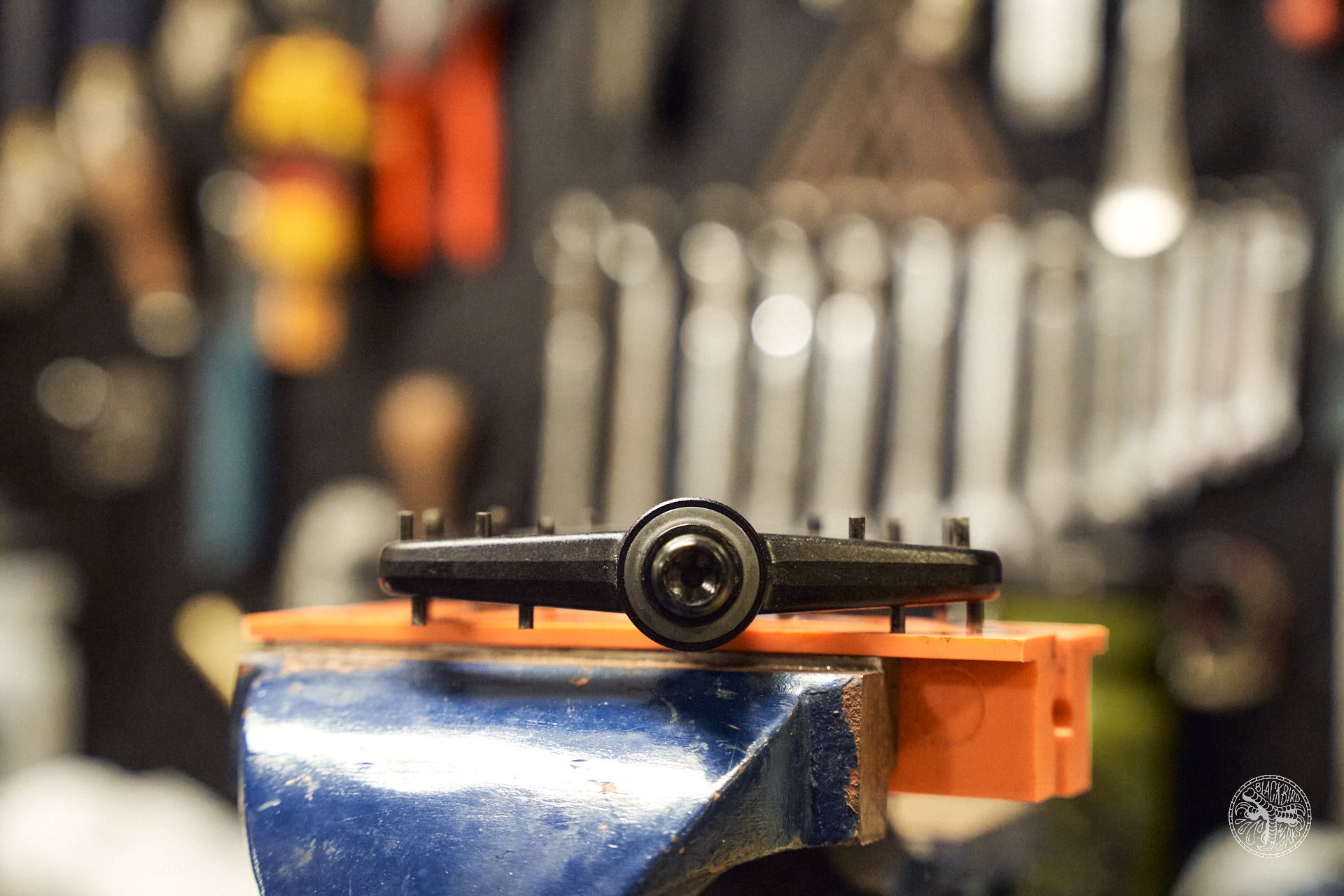
Thicker in the middle where the axle is and thinner where it matters most.
"Bikes are better with pedals, so we made some." - Todd Cannatelli, CMO, PNW Components
Aside from the convex platform, PNW's shape is unique in a few ways. It ditches the standard asymmetrical leading edge for surfaces that are evenly bevelled top and bottom. Further, the shape of the platform is widest at the crank, where you are least likely to strike the ground, and at its most narrow at the outside edge. This makes great sense, providing a nice wide shape for grip and stability on the inside while minimizing pedal exposure on the outside. There are 11 pins per side and the inner pins are mounted slightly lower, providing a little bit of concavity for those so inclined.
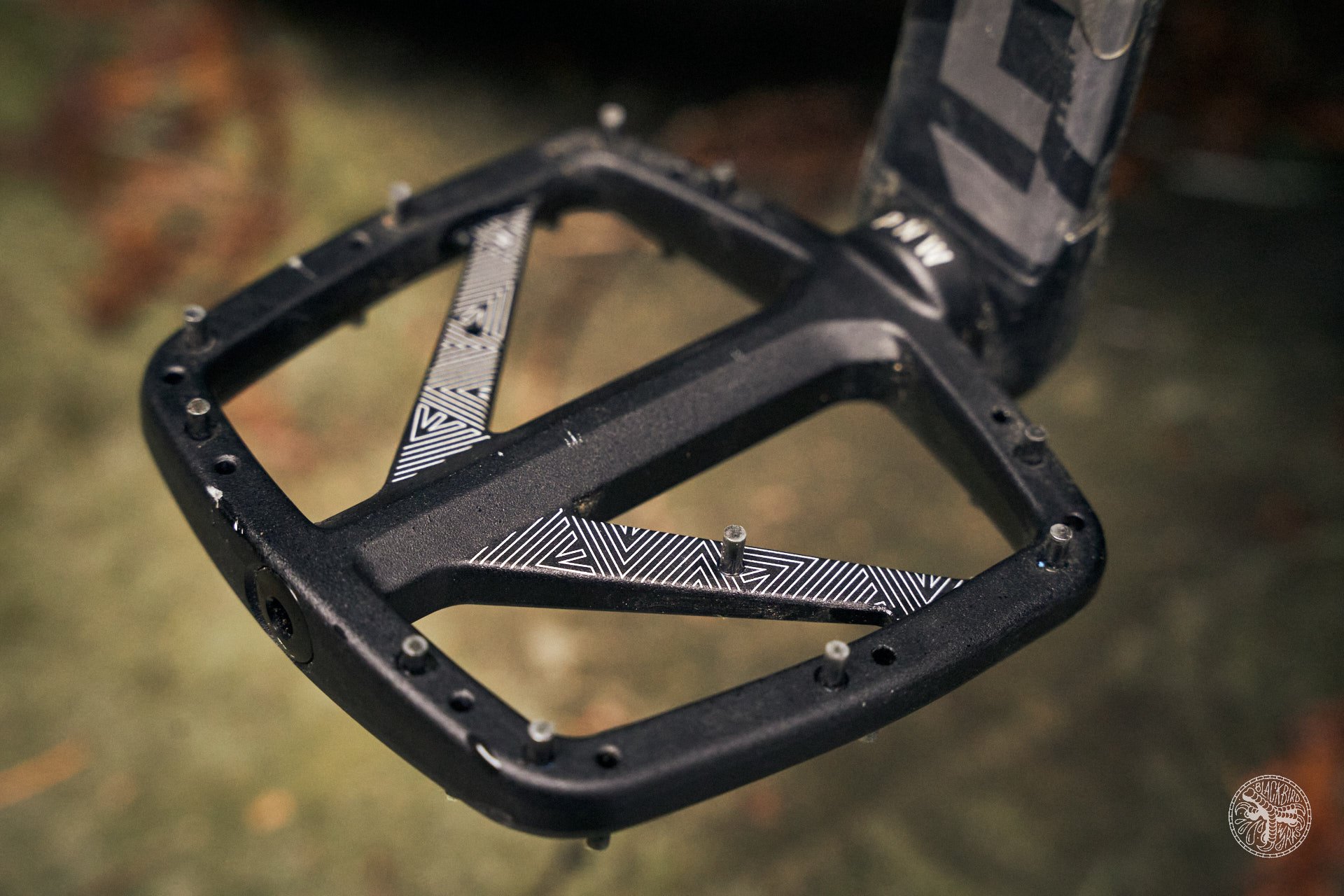
The platform tapers in width as it moves away from the crank.
In terms of grip, I continue to be more comfortable with enough stickiness to keep me planted, but not so much that I need to sit down to reposition my foot. These pedals strike that balance really well with my Specialized 2FO Roost shoes, which I would describe as having medium-high grip, and certainly less than 5:10 Impacts or even Trailcross. For those who prefer monster grip, I'm quite sure these would deliver with the right shoes.
It appears these pedals were built with longevity and reliability in mind. The pins are custom designed steel with a 2mm hex on the back side. On the business side they are solid, which should help them resist sheering, and the lack of threads should produce tidier lacerations in your shins. The slightly larger diameter of the pins compared to OneUp for example, should make them less likely to split you like a ripe tomato.
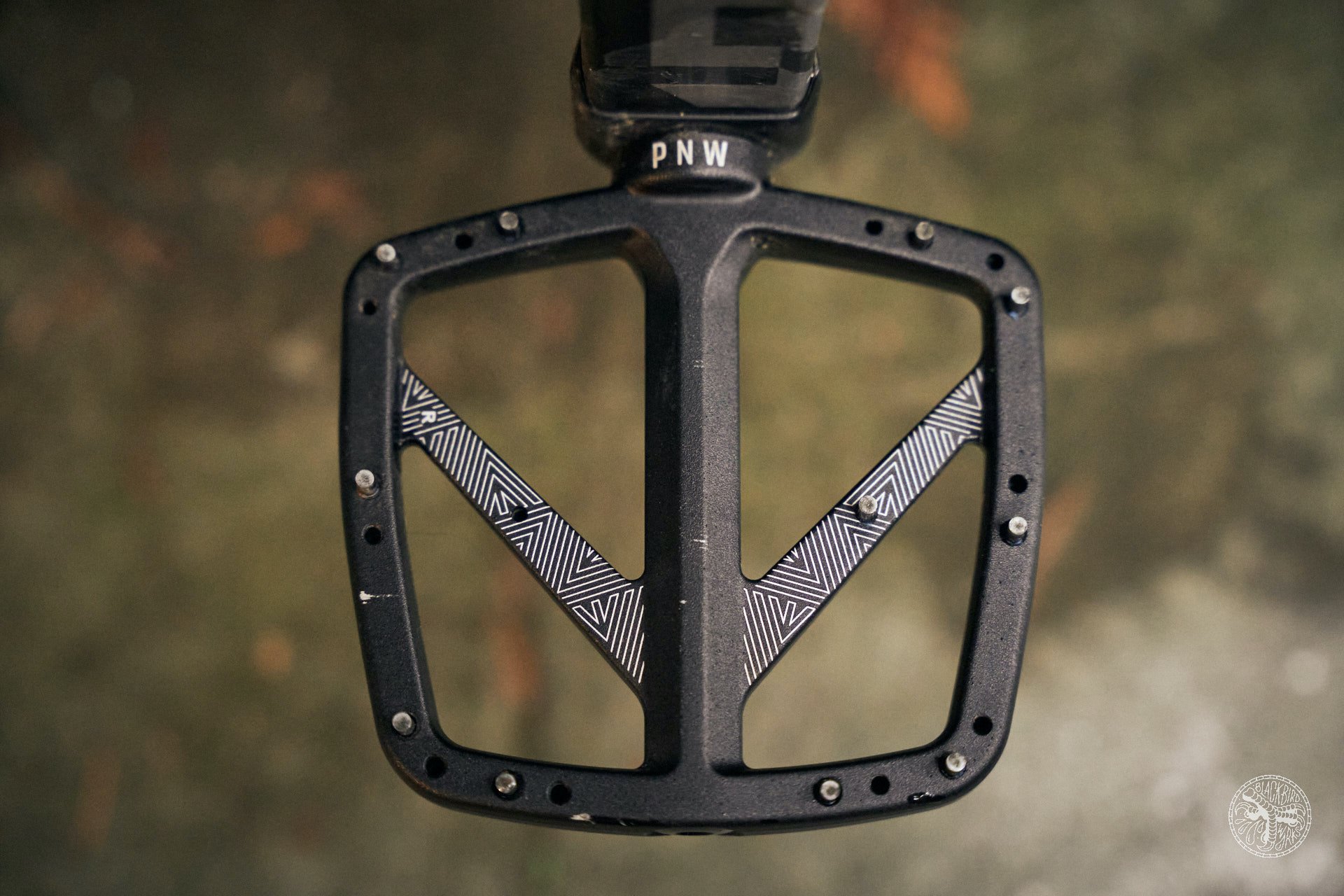
I wondered about traction in the middle section of the pedal because it initially seemed to me there was a lot of pin-free real estate. In fact the grip was excellent and I never thought about my feet while I was riding. There are 11 pins per side.
The release for the Loam Pedals promises easy maintenance and single hex key breakdow - and this was accurate. Both the dust cover and the axle nut are removed and replaced with a 5mm hex. For the axle nut you may need a t-handle or something that has a long reach but also decent torque.
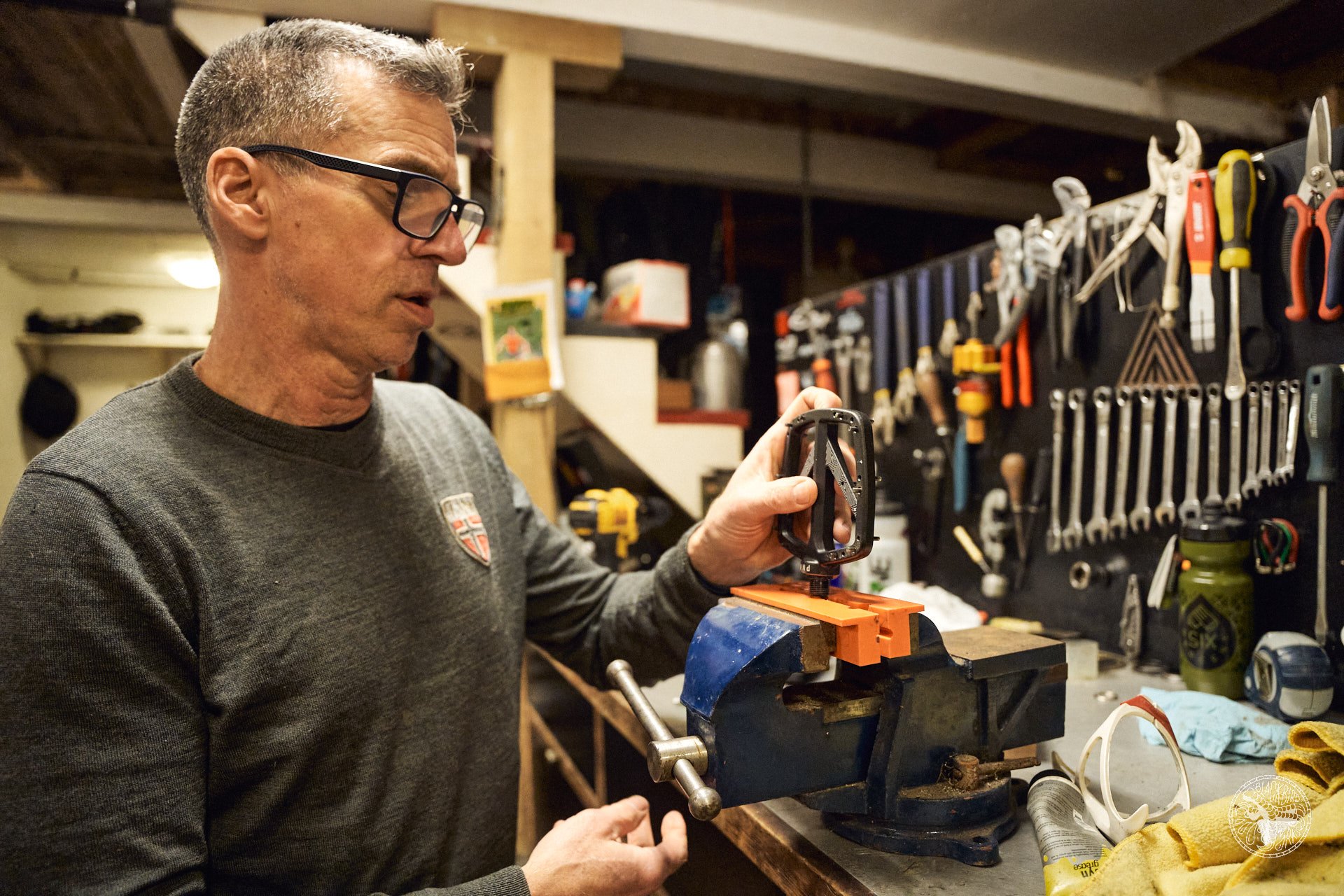
Soft jaws are useful for working on pedals.
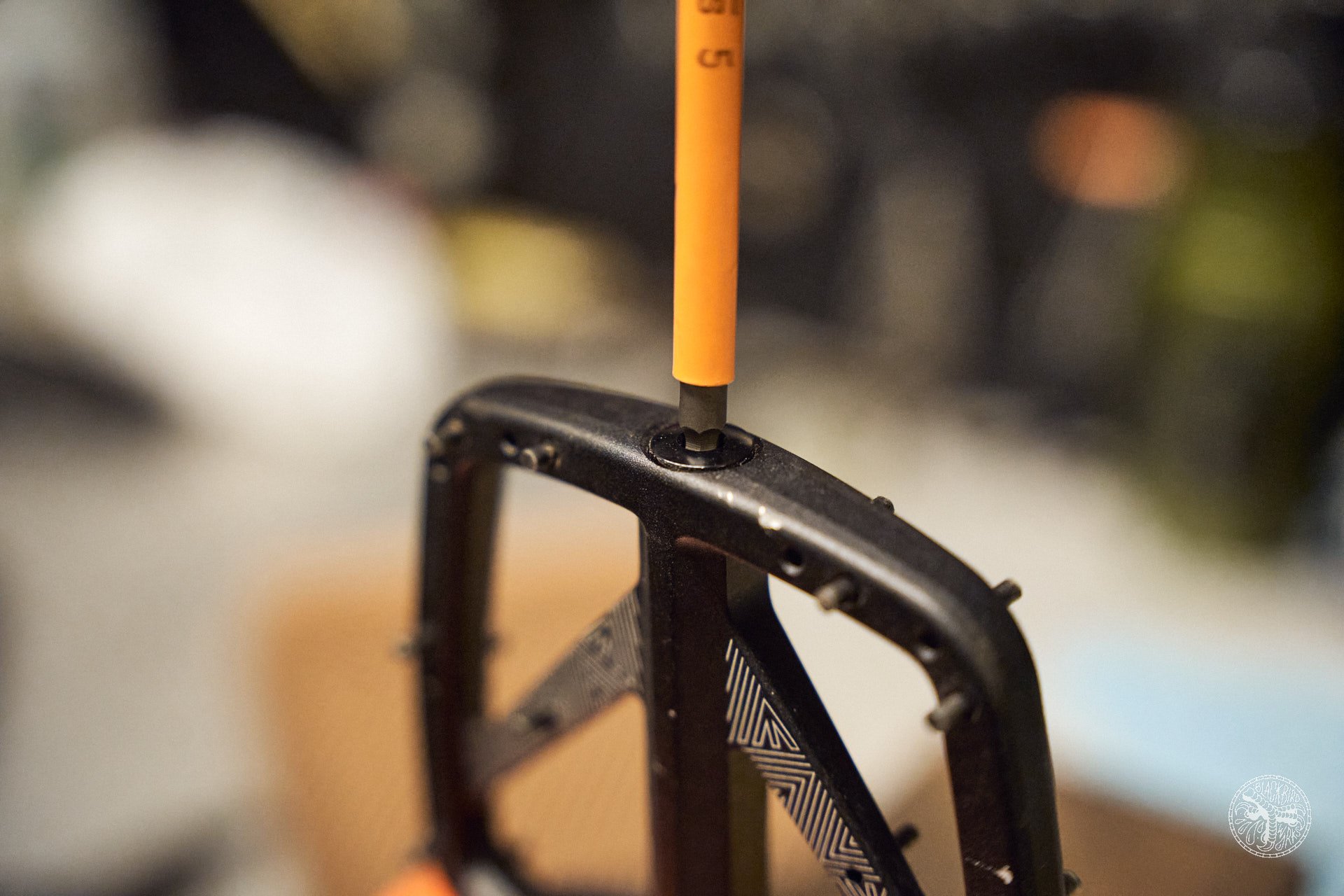
A 5mm hex removes the dust cover...
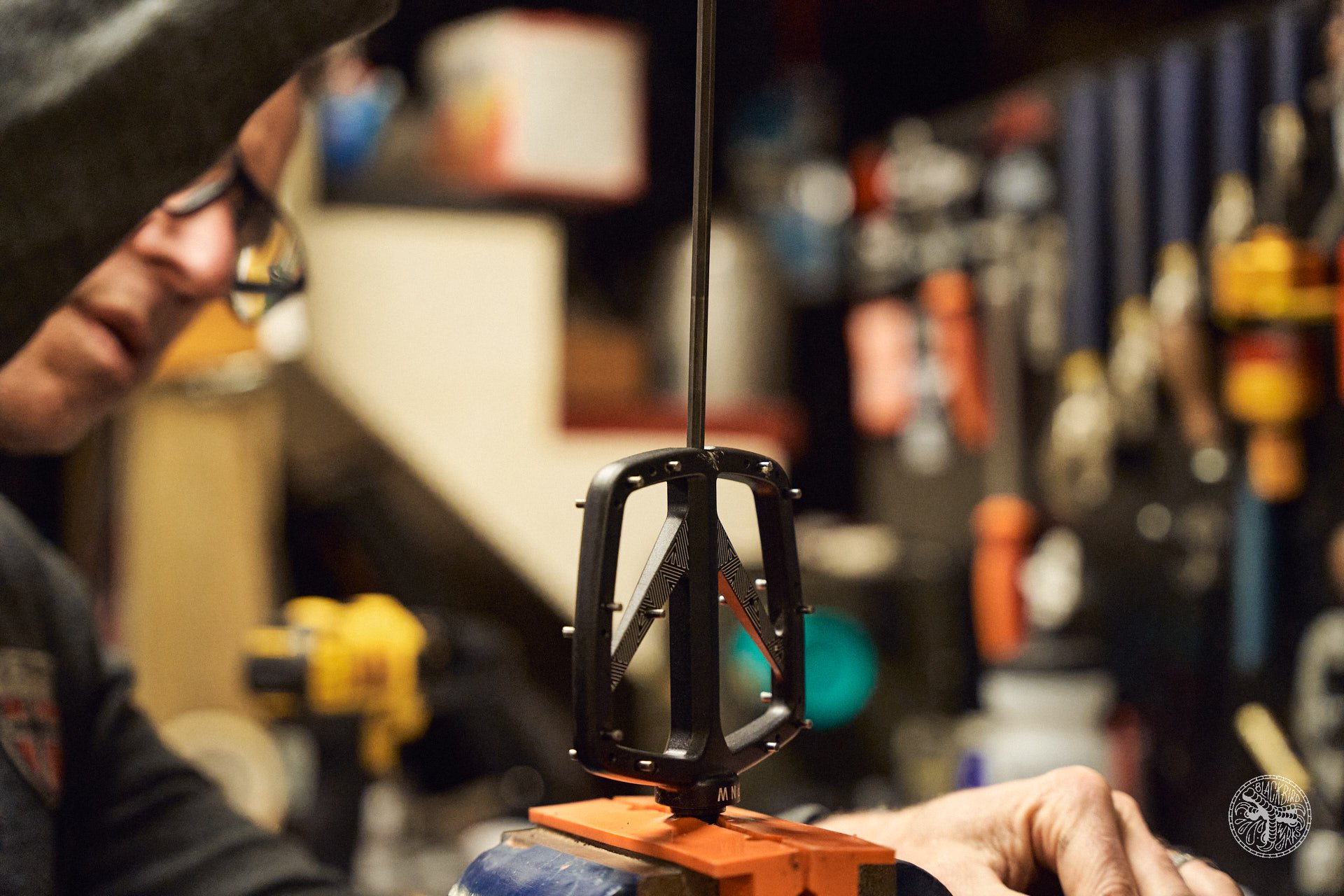
And the axle nut.
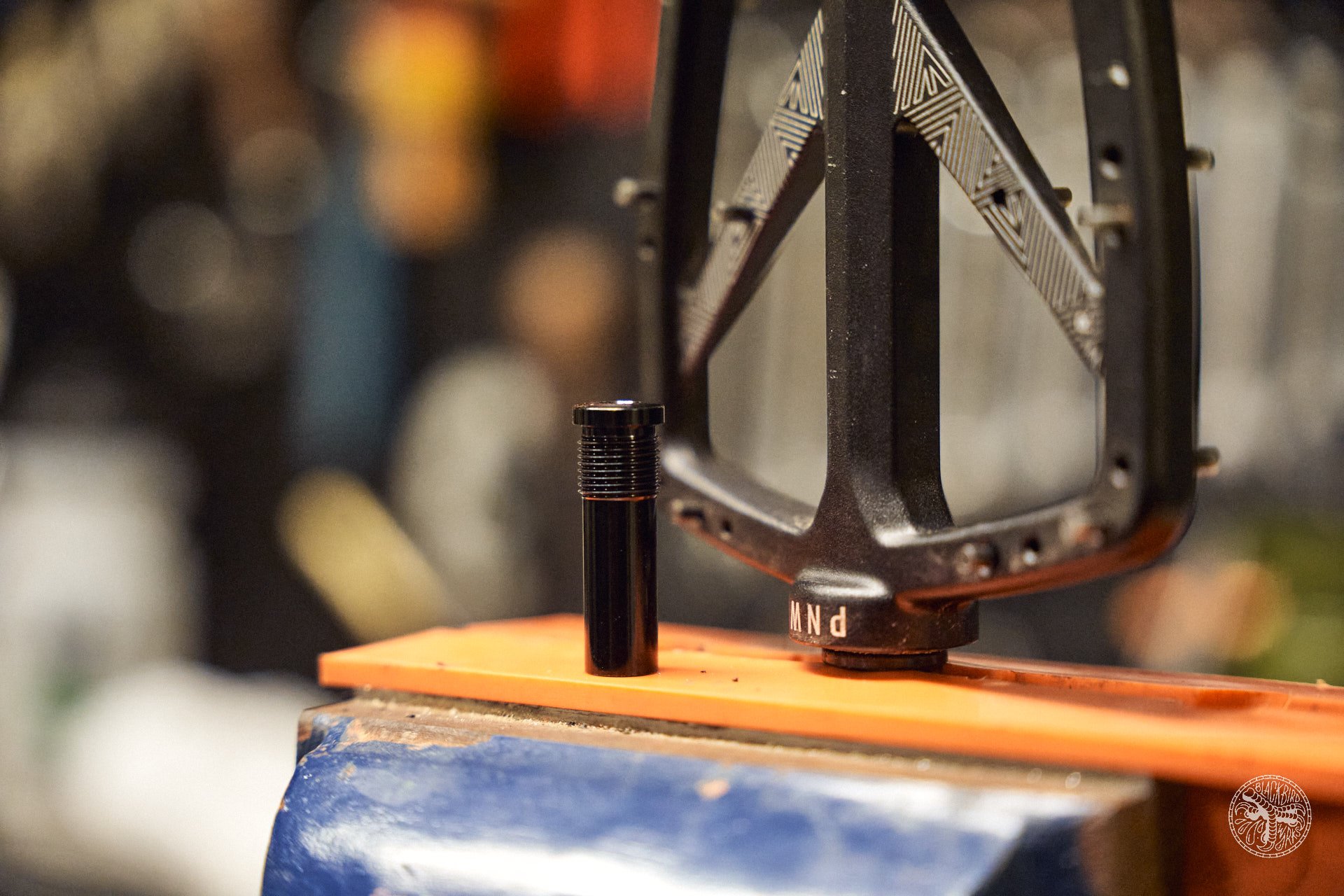
The dust cover seems to offer preload as well, and likely superior sealing because of its length.
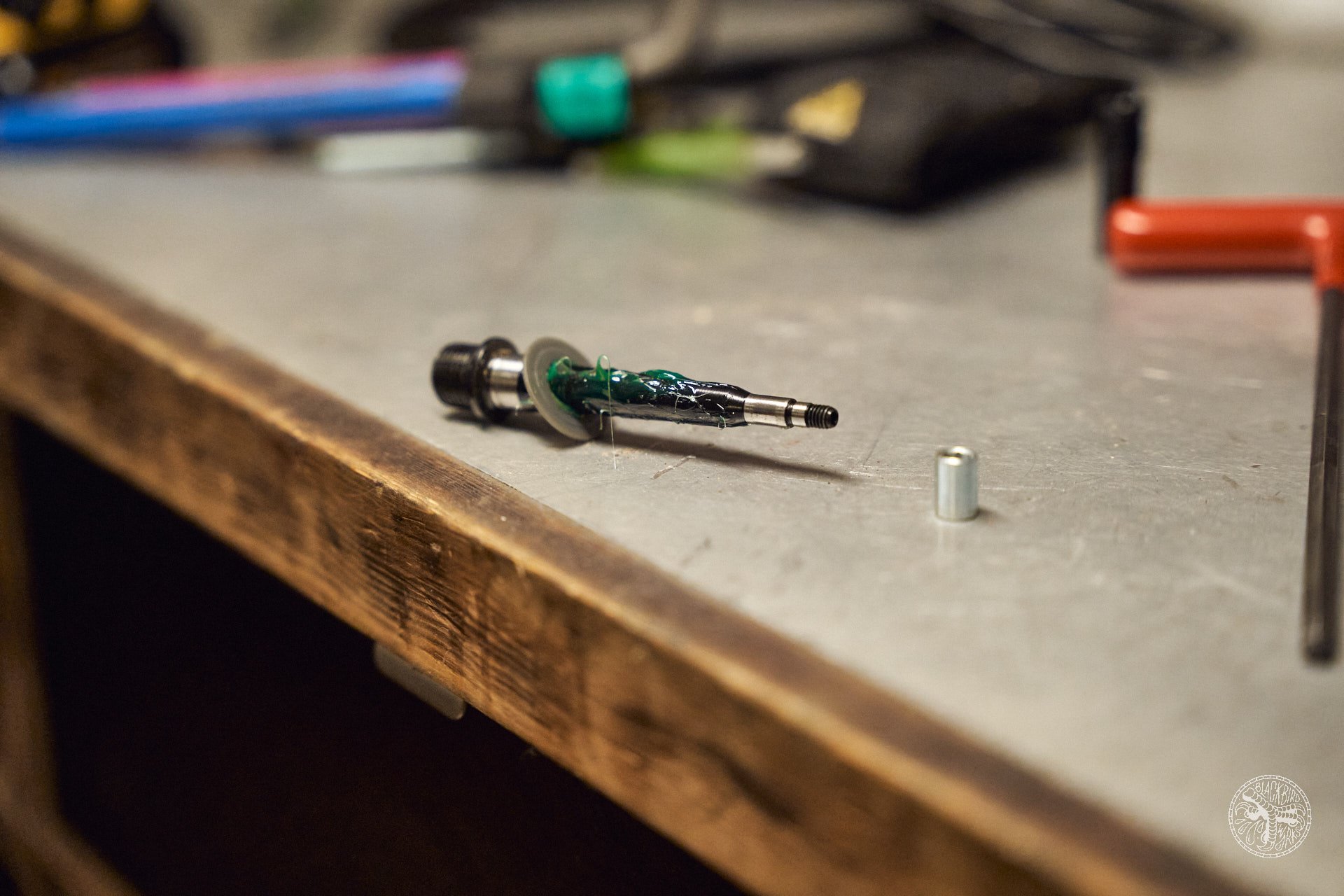
Lots of what looks to be quality grease and a large dust cover.
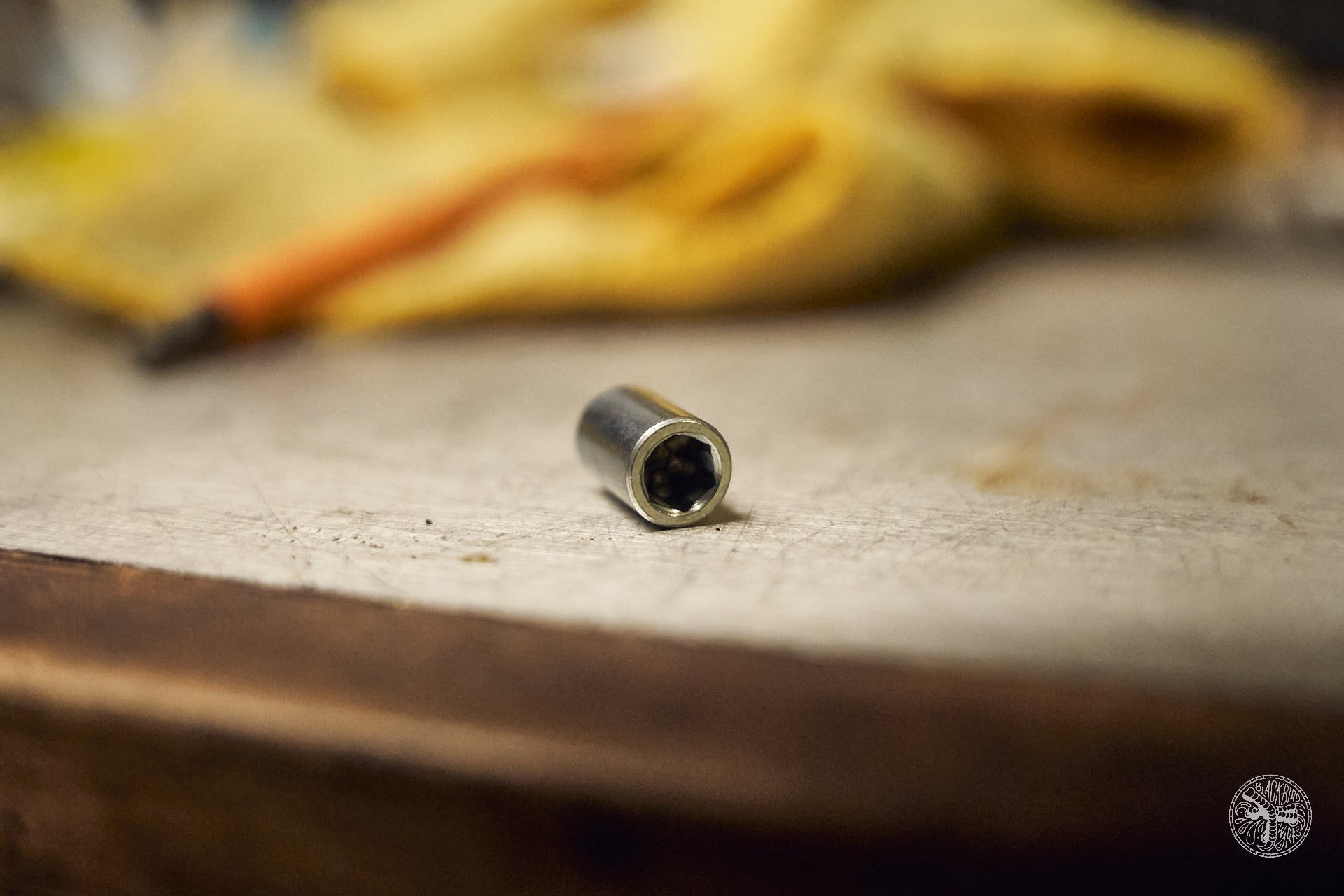
Many axle nuts require an 8mm thin-walled socket but PNW designed this one to accept a 5mm hex - a tool every mountain biker owns.
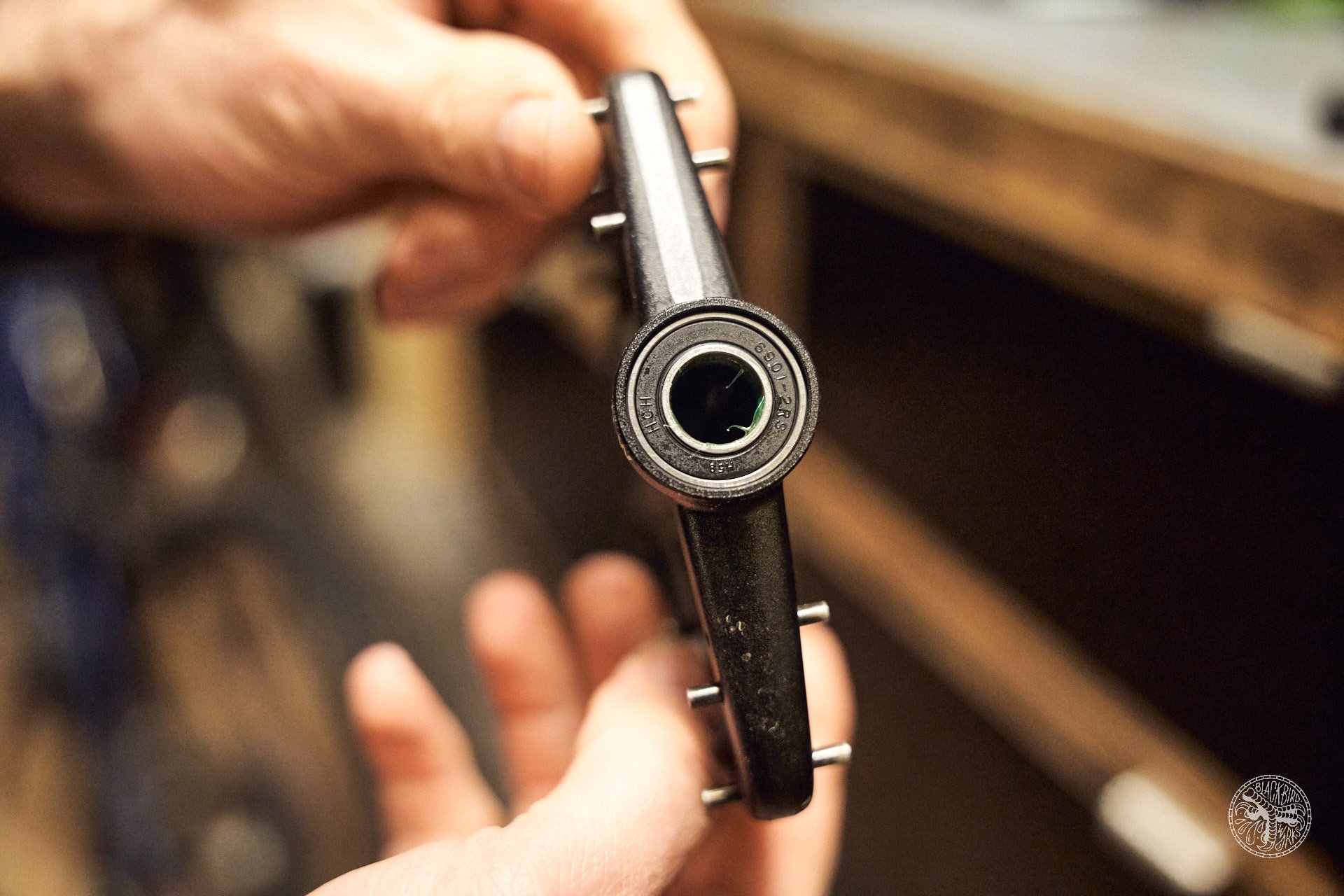
The large outer bearing is an HCH 6901-2RS. I have no idea what that means.
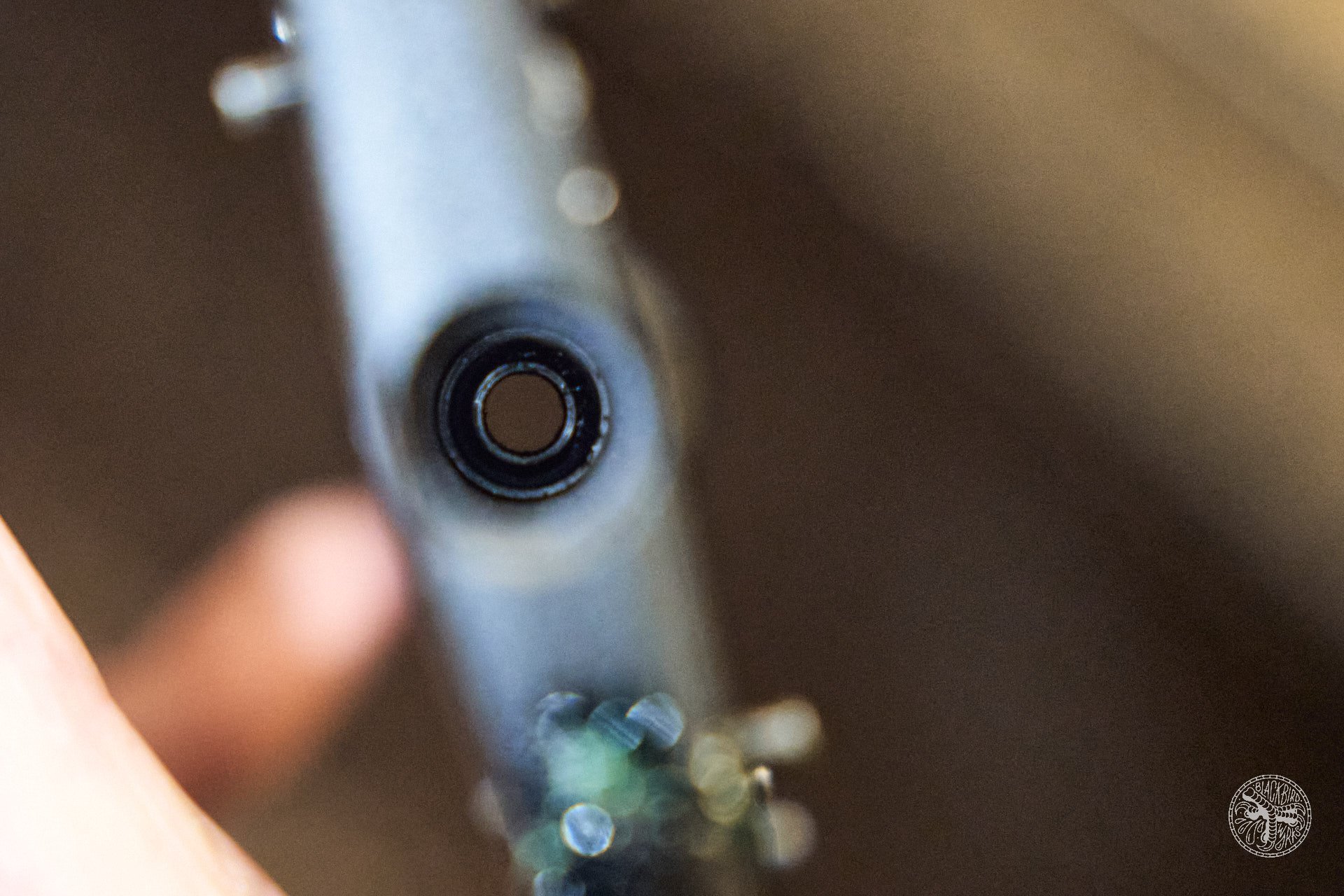
There is a second smaller diameter cartridge bearing underfoot as well as a roller bearing.
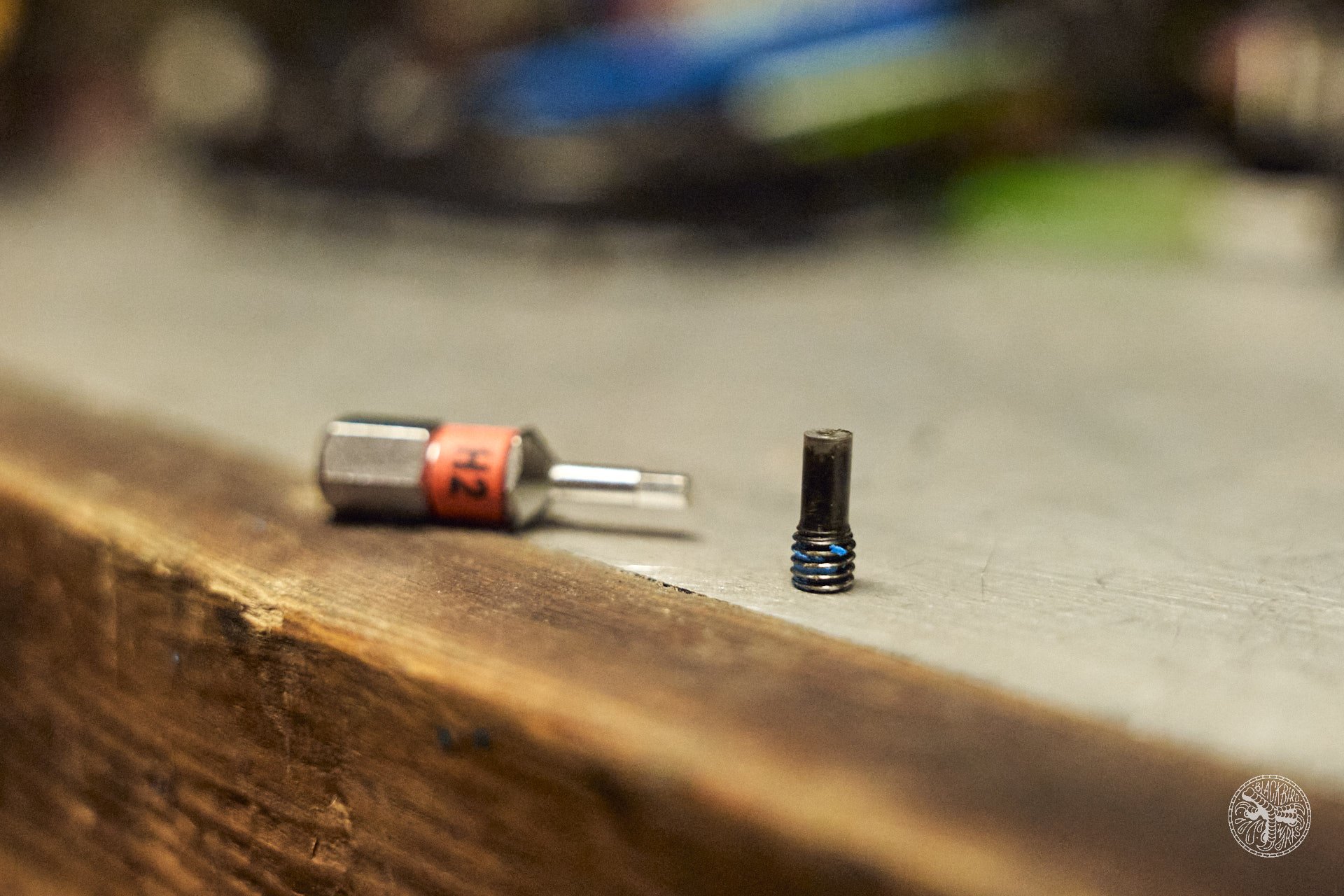
The pedal pins thread in from the back with a 2mm hex and they appear to ship with thread locker applied.
These are fine looking pedals that come in three different finishes, polished purple and silver, and semi-matte black. PNW's more descriptive labels are below.
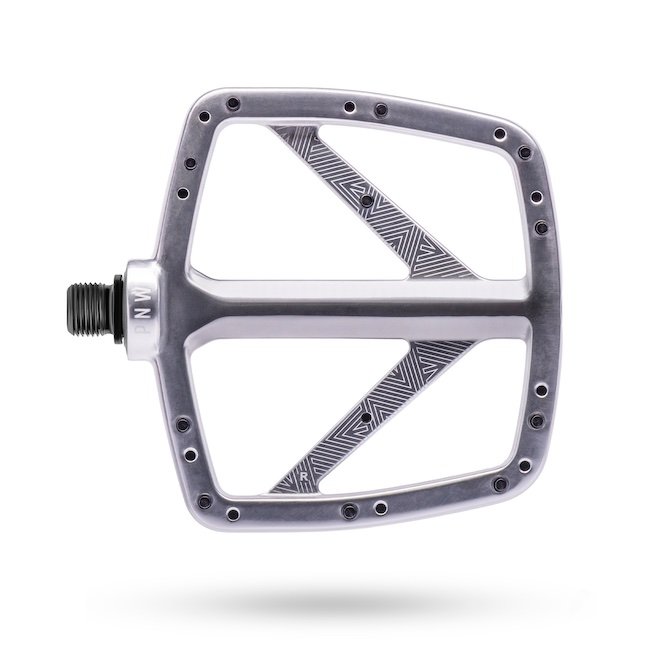
Nickelback
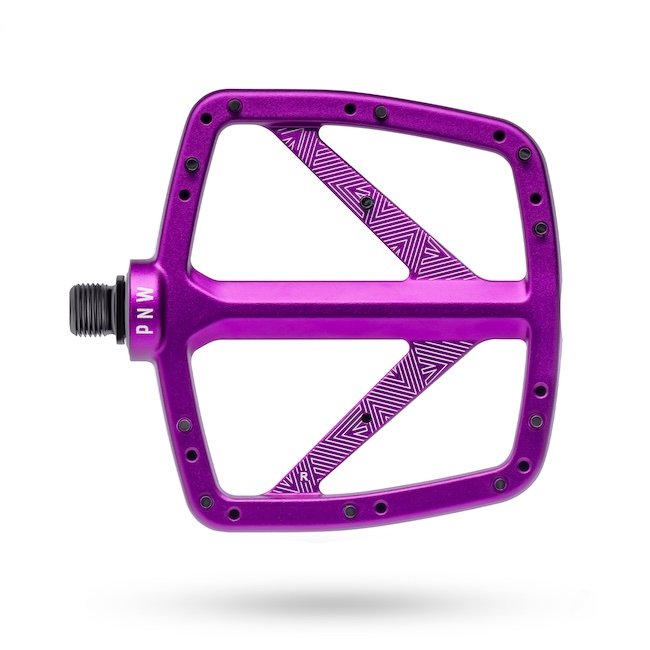
Fruit Snack

Blackout Black
Retail MSRP: $99 USD
Colours:
- Black Out (Black)
- Nickelback (Silver)
- Fruit Snacks (Purple)
Product Details:
- 445 Grams (Pair)
- Forged and post-CNC'd 6061 aluminum
- (2) Sealed cartridge bearings and (1) roller bearing
- Platform size: 105mm wide x 115mm long
- 22 Custom replaceable pins per pedal, threaded in from underside
- Fully rebuildable and serviceable
Some nice PNW touches are biodegradable packaging, and PNW's lifetime warranty. In their words; "PNW is committed to cover any failure due to a manufacturing defect and will repair or replace without charge to the original owner." The only miss I can see is that the pedals arrive without any spare pins. Anyone who has spent time riding challenging rocky terrain using flat pedals know it's only a matter of time before at least one pin is lost or sheared off and ordering them after you need them isn't nearly as good. 4 pins minimum is what I would expect, even if it adds a couple of bucks to the retail price.
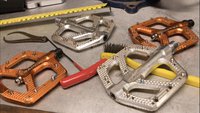
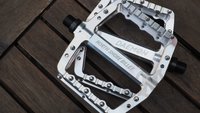
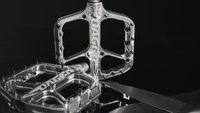
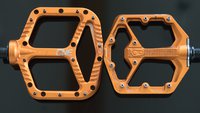







Comments
cheapondirt
2 years, 3 months ago
Shoulder angel: You don't need these. You really like the feel of your Vaults, which are the polar opposite of these.
Shoulder demon: These will almost never hit the ground, and they're cheaper than Oneup. You like good value items.
Shoulder angel: You can't save money by spending it!
Shoulder demon: Purple.
Reply
Mammal
2 years, 3 months ago
I like the cut of your value-oriented jib, cheapondirt.
Reply
Vik Banerjee
2 years, 3 months ago
To your point about pin damage/wear. One of the reasons I like overly grippy pedals/shoes is that as both age the grip reduces. If I start at the "right" amount of grip when both are new then my window before I need to take action is shorter. Too sticky isn't a huge problem whereas not sticky enough is danegrous.
Nice to see PNW expand their product range. They seem like a good company to support with some $$. I'd love to see a composite version of these pedals. We've switched to composite pedals as our older metal ones wore out and haven't looked back.
Reply
Cam McRae
2 years, 3 months ago
Interesting. Makes sense. For me too sticky is dangerous and impacts my performance when my foot gets stuck in the wrong position. Like my heel! I also test a lot of shoes so I don’t tend to go too deep into the wear cycle before passing them on in my admittedly privileged position. I do patch and repair shoes though and in general I take good care of gear and keep it a long time.
I’m sure composites are on the horizon. I’ve been meaning to try some. I’m interested in muted pedal strikes and lower cost but I also like to be able to service and use pedals for a long time and torn out pins seem unlikely to be replaceable in that medium. With aluminum you can move over slightly, drill and tap a hole and you’re in business if threads are unusable. Has anyone tried that with composite? Although with PNW’s design threads are well protected.
Reply
Moritz Haager
2 years, 3 months ago
I always wondered why people choose aluminum over composite, given that the latter cost less and are usually significantly lighter, and look less beaten up after riding for a while IMO, but I never thought about re drilling and tapping for a new pin. That's a really good point.
Reply
cyclotoine
2 years, 3 months ago
My One-ups and Wah Wah II composites are threaded into a nut so that hasn't been a problem. I run the Wah Wahs on my fat bike with winter boots and love them. I rode the One-ups in summer and found the pins self destructed on any hit (just folded) and they did not offer as much grip as the trusty race face atlas (which come with a lot of spare pins). The Atlas pins are so robust that I've never replaced one but have sharpened them with a Dremel and even as short as they are they still offer plenty of grip.
The shape of these PNWs concern me as I think the corners are a little more out there than my Atlas pedals. The weight is also a little high.
I'm a PNW fanboy. I think the Loam Lever is the best, but don't like the skinny grips. I love their droppers and always recommend them to anyone who asks me what dropper to buy. I have two. I also run the range handlebar and the loam hip pack. I wanted these pedals to be irresistible and I was ready to buy them when they teased them a couple days ago. They look good and the price is reasonable, but I think the corners are a little to out there and they are nearly 100g heavier than Atlas :(
That said, I'll probably pull the trigger if they add a grey ano option.
Reply
Vik Banerjee
2 years, 3 months ago
I haven't killed a composite pedal yet. Ideally pins should be designed so they shear off and you can remove them remains from the back side and insert a new pin. The cost of a new composite pedal is in line with a rebuild kit for a fancy metal pedal. So the cost of ownership should be a lot lower with composite assuming they last a reasonable amount of time with some bearing swaps.
I try to run repeats of the same pedal on different bikes as much as possible that way as time wears on and more damage is sustained I cannibalize two sets of older pedals and make one functional set that can get back on the trail.
Reply
cxfahrer
2 years, 3 months ago
My composite pedals (Chester clone) are too small and the pins are too few and too sharp, maybe that contributed to my last unwanted drive to the hospital. But drilling holes into composite is easy and surprisingly those extra pins held up in those holes well.
With my DMR Vault the pins on the outer corners get smashed quite often, they tear out damaging the pedal body which makes refitting in any way difficult.
So in my opinion the pros and cons weigh out and it comes down which pedals look best. The PNW has a point there.
Reply
Cam McRae
2 years, 3 months ago
Good to know cxf. I imagine if you drill the hole the correct size the pins can be self-tapping? If so that's the simplest solution of all, as long as it you don't run out of real estate.
Reply
toddball
2 years, 3 months ago
6901 is the bearing size, 2RS refers to the removable rubber seals on each side. Probably all radial ball bearings you'd find on a mountain bike are 2RS. See here, for example: https://www.bearingcentre.net/blog/which-bearing-closures-are-best
Reply
Jenkins5
2 years, 3 months ago
Nice looking pedals (IMHO ruined a bit by the standard ugly PNW graphic), but I still just don't get on with the convex thing. Concave only for me! More choice is always good though....
Reply
Cam McRae
2 years, 3 months ago
I used to think concave was the only way but after riding both OneUp and Canfields I became a convert. Have you tried any convex pedals? I suppose foot placement would also have an impact. I place the ball of my foot toward the leading edge of the pedal when descending but if I placed it in a pedalling position, with the ball over the spindle, that would change things.
Reply
Jenkins5
2 years, 3 months ago
Yup. Had OneUp's for about 3 months and just didn't get on with them. Have friends that love convex and others that hate it (like me)....Different strokes for different folks I guess!
Reply
hongeorge
2 years, 3 months ago
With you on the convex thing, but "nice looking", I'm not so sure. Possibly the first PNW product (including the clothing) that I've looked at and thought "ugh, no thanks" - everything else in their range I've liked, and have bought some of them, but won't be touching these given the amount of similarly priced, better looking options, the convex thing is just the final nail.
Reply
cyclotoine
2 years, 3 months ago
I wanted this pedal to be love at first sight. I asked them two years ago when they were going to introduce a flat pedal and they said stay tuned. When they teased this at the start of the week I was beyond stoked. My stoke faded pretty quickly when I saw convex and the weight.
Reply
cyclotoine
2 years, 3 months ago
Thanks for posting the most informative new product release article of the sites, but one question. Is it running on micro bearings on the outside of the pedal? (like RF Atlas?) if so, how many? I'd guess 2 looking at the spindle. I am not a fan of bushings and this is another reason I'm still using Atlas after so many years, they just keep going and are easy to service. While I do need to replace the inner bearing from time to time, the micro bearings (3 per side) just keep going.
Reply
Skooks
2 years, 3 months ago
Interesting. I have had the opposite experience with those tiny bearings on the outboard end of the spindle. I have blown up many of them on both Atlas and early-generation One-ups. OneUp has since changed to a bushing design and it has been bombproof for me.
Reply
cyclotoine
2 years, 3 months ago
...and new Atlas pedals now out. And they've done away with the little bearings. I'm willing to try the new Atlas if my old ones ever need replacing. I suppose I should just remove them for service at some point as a safety issue and retire them to some kind of low impact commuter bike duty.
Reply
Cam McRae
2 years, 3 months ago
It's a combo of a small cartridge and a roller bearing. I could just barely see the roller bearing and I didn't have time to remove the bearings so I can't be more descriptive at this point.
Reply
Velocipedestrian
2 years, 3 months ago
I'm with Andrew in that silver is the right colour for a longterm pedal, but they've made it hard with that name.
Reply
Cam McRae
2 years, 3 months ago
I'm hoping the invocation of Nickelback is ironic.
The silver is my favourite finish of the three for sure and it definitely ages best. Black is probably the worst.
Reply
fartymarty
2 years, 3 months ago
After 32 years of riding bikes on dirt i've finally come to the conclusion that it's pointless getting beautifully coloured anodised components because they will all wear with time. While silver may be a little boring it's never going to look bad.
Reply
Andy Eunson
2 years, 3 months ago
That and that purple shit or worse, oil slick, looks cool for 20 minutes then you wonder wtf was I thinking and start aiming those pedals at every rock you can see to justify replacement. Fashion is a weird thing. I have a theory that fashion designers (and bike and part manufacturers) make bets with each other about what ridiculous trend they can get us into. Hence the mens suits that are three sizes too small. Or the recent trend of chrome ski suits. Black or silver bike parts never go out of style.
Reply
AndrewR
2 years, 3 months ago
purple ano for life!!
Reply
Kenny
2 years, 3 months ago
I felt they looked wierd but couldn't put my finger on it. Someone on PB pointed out they look like the attachment for a kitchenaid mixer. 100% bang on.
I like PNW but these are just way too goofy looking when a lot of great options already exist.
Reply
cheapondirt
2 years, 3 months ago
It's my completely unfounded hunch that these have the kitchen-aid look just to differentiate from Oneup. Certainly it's not helping save weight.
Reply
Please log in to leave a comment.